QuestionI have a 20 yr old female RES that has recently developed gold spots on Carapace. I have had her for 18 years and she has been fed cat kibble once daily and supplements of shrimp, sardines, pollock on occasion all of her life. No other health issues until this. 80 gal tank - basking spot - UV light - temp 80 degrees -
captive bred - no appetite problem - very active - daily defecation - "skin" shedding lately - shell pieces when allowed to dry completely. She is approx 14 inches long and weighs approx 1o lbs.
Only concern is gold spots and egg laying for first time in her life last year...7 eggs over two week period - which she ate.
Thank you
AnswerI applaud you for having her so long and caring for her instead of dumping her. Turtles are long lived however, and it may take years for chronic problems to visually manifest. In this case, I would have to ask you to follow up and post a picture of one of these spots for scale.
You should gently try to rub them and see if they come off. It could be fungal or algae growth, or something deposited from excessively hard water. It could also be something dietary in nature. Examine the ares under a magnifying glass and see if there appear to be pits or holes, or if the scutes are translucent and shedding. There could be an underlying infection under the scutes. If there appears to be a problem with the scutes, she should see a vet and may need
antibiotics or other topical treatment. Are these spots only visible under the UV lighting? You say "UV light". Is you lamp a UV "B" light though?
Even though you have had her a number of years, I see some issues with the diet. It is excessive for animal protein, and this can cause serious issues, such as gout, kidney stones, kidney damage, liver damage, and excessive growth and shedding. Most experienced keepers do not feed their mature turtles everyday, much less cat kibble everyday! That is way to high in protein to be using all the time. I would not use it at all. I have seen people who have kept box turtles indoors for 20 years, without UV lighting, and on a diet heavy in hamburger meat. They thought just because the animal was still alive 20 years later, that they had been doing everything right; even though the turtle was so horribly disfigured he had outgrown his shell, could not even duck into it, and wore it more like a hat or backpack than a normal shell.
Mature RES turtles become more omnivorous as they get older. Our 1 year old eats more plant matter than this, and all our rescued RES get anacharis, duckweed, sheet seaweed, along with chopped greens, squashes, and occasional fruit. For animal protein they get live crickets, earthworms, shrimp, and pellets as supplement. Feeding of animal protein for adults is every other day at most. Daily feedings are restricted only to juveniles, or to plant matter.
http://redearslider.com/
http://www.anapsid.org/mainchelonians.html
http://www.anapsid.org/reslider.html
http://www.allturtles.com/setup/indoorWT.php
http://www.geocities.com/margareth100.geo/res.html
http://www.turtlepuddle.org/
http://www.austinsturtlepage.com
http://www.turtlecare.net/shed.htm

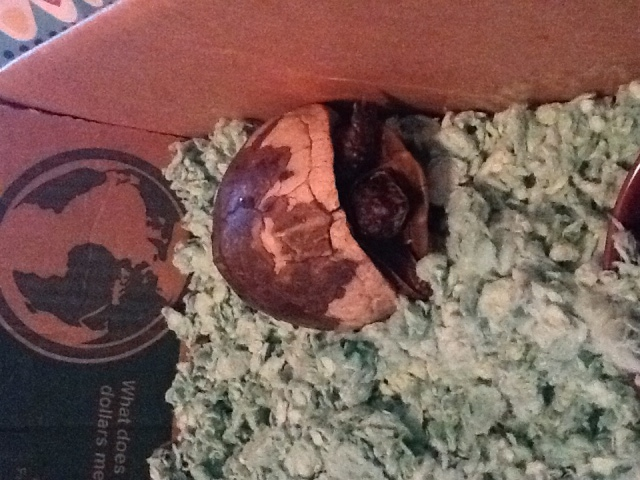 tortoise not eating
QuestionQUESTION: my turtle is not eating and its Febru
tortoise not eating
QuestionQUESTION: my turtle is not eating and its Febru
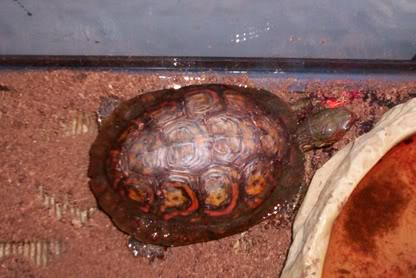 land/box turtle
QuestionQUESTION: My turtle has been getting an algae-l
land/box turtle
QuestionQUESTION: My turtle has been getting an algae-l
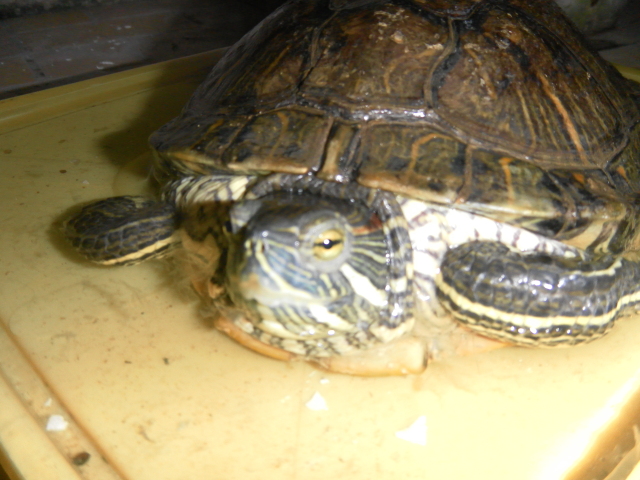 obese
Question
obese
i attached pictures of my turtle, is she
obese
Question
obese
i attached pictures of my turtle, is she
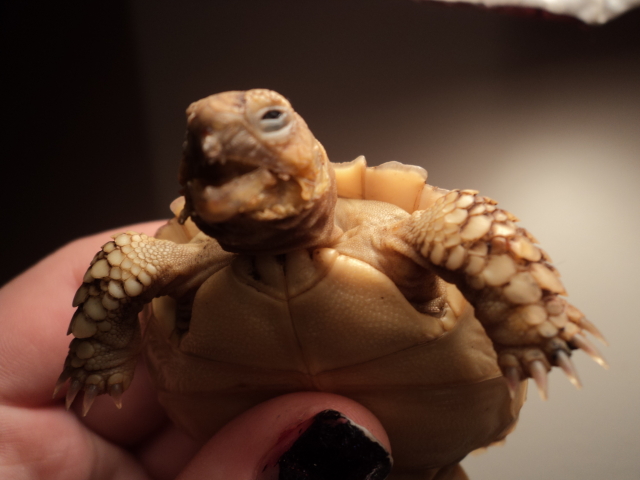 My baby Sulcata :( !!
QuestionPicture of my Sulcata
QUESTION: Okay, so
My baby Sulcata :( !!
QuestionPicture of my Sulcata
QUESTION: Okay, so
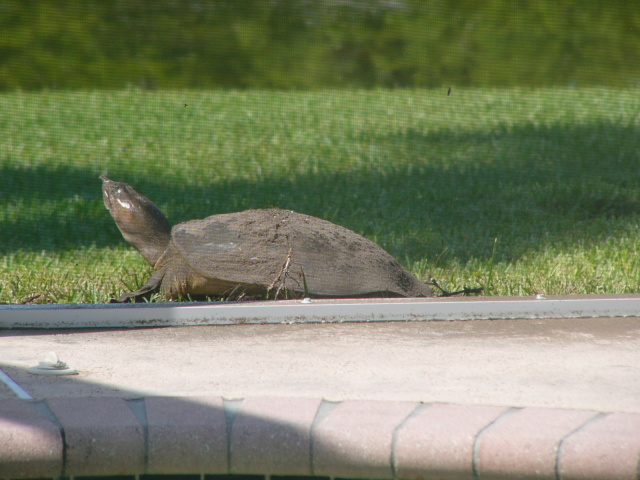 Softshell turtle nest
Question
Softshell nesting
Hi,
Just an hour ago, I have
Softshell turtle nest
Question
Softshell nesting
Hi,
Just an hour ago, I have